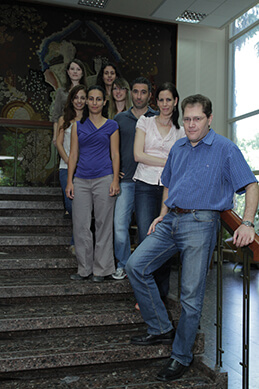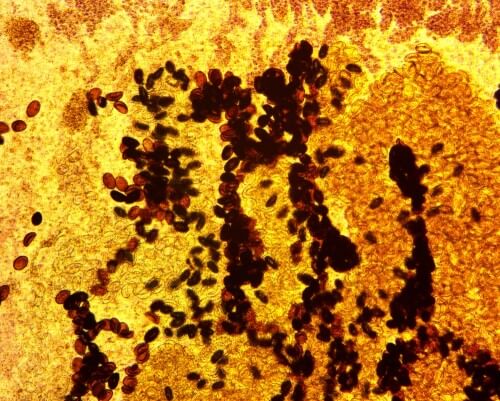How does cellular aging occur? Can it be prevented?

It is common to associate aging with its external signs, such as wrinkles and white hair, but most aging processes are not visible to the eye, but occur within tissues and organs. One of these processes, called cellular senescence, occurs when the cell does not die, but stops dividing. A better understanding of this type of arrest can in the future help to preserve the "youth" of the tissues in order to prevent cancer or degeneration of organs, or to treat diseases related to aging.
What is the natural role of cellular aging in the body? What causes senescent cells to accumulate in our bodies with age? Is it possible to prevent aging, or at least effectively remove the aging cells from our body? These are some of the questions being investigated in the laboratory of Dr. Valery Krzyznovsky, in the Department of Molecular Biology of the Cell at the Weizmann Institute of Science.
liver cells
In his post-doctoral research, which he carried out at the Cold Spring Harbor Laboratory in New York before coming to the institute, Dr. Krijnovsky and his colleagues discovered that cellular aging plays a much more active role in the healing and prevention of diseases than was commonly thought. Thus, for example, cancer tumors shrink under the influence of drugs not only because cancer cells kill themselves, but also because an increasing number of these cells undergo an aging process.
Furthermore, Dr. Krizhnovsky discovered for the first time that cellular aging is essential for preventing liver disease. When the liver cells are damaged due to a viral infection, disease, or excessive drinking of alcohol, cells called fibroblasts are activated, which proliferate in order to support the restoration of the liver by creating "scaffolds" for tissue regeneration. Dr. Krizhnovsky found that the restoration ends when the fibroblasts age, stop multiplying, thus allowing the tissue to return to its healthy state. Aging is essential to prevent another damage called fibrosis: excessive creation of scar tissue by fibroblasts, which in itself may cause cirrhosis of the liver - a common cause of death in the Western world.
Dr. Krizhnovsky later discovered that another essential step in the maintenance of healthy tissues is the removal of aging cells from the body. When it comes to the liver, "killer" immune cells of the NK type enter the picture at this stage, which eliminate the fibroblasts that have aged. If the disposal is not done properly, or if the fibroblasts do not age at all, this can cause damage to the liver. Says Dr. Krizhnovsky: "Cellular aging is first aid for damaged tissue, a kind of arterial blockage. But just as an artery blocker causes damage if it is not removed in time, so also aging cells, which are not removed as required, secrete inflammatory substances that cause tissue damage over time." In the research he carried out at the institute, Dr. Krzychnovsky revealed the mechanisms by which the aging cells are eliminated. He identified the receptors on the surface of the aging cells that help identify them through NK cells, as well as the mechanism by which NK cells kill the aging cells: a protein that punches a hole in the cell membrane, thus allowing the entry of another protein that kills the cell.

Using a drug based on these mechanisms, it may be possible, in the future, to prevent the fibrosis of the liver or other organs, and to treat diseases related to aging, such as certain arthritis and clogging of arteries, in which aging cells are involved. The drug will eliminate aging cells that are not properly eliminated naturally.
This type of drug may also lead to cancer prevention. In recent years, scientists have discovered that cellular aging is one of the natural processes that stop the formation of cancer in its early stages. Probably, for this reason, there are a large number of senescent cells in precancerous tissues, such as lesions that can turn into melanoma over time. The efficient removal of these cells from the body may prevent the transformation of precancerous tumors into cancer.
And in the even more distant future, scientists may learn to remove aging cells from tissues to delay the aging of the body and preserve its health.
